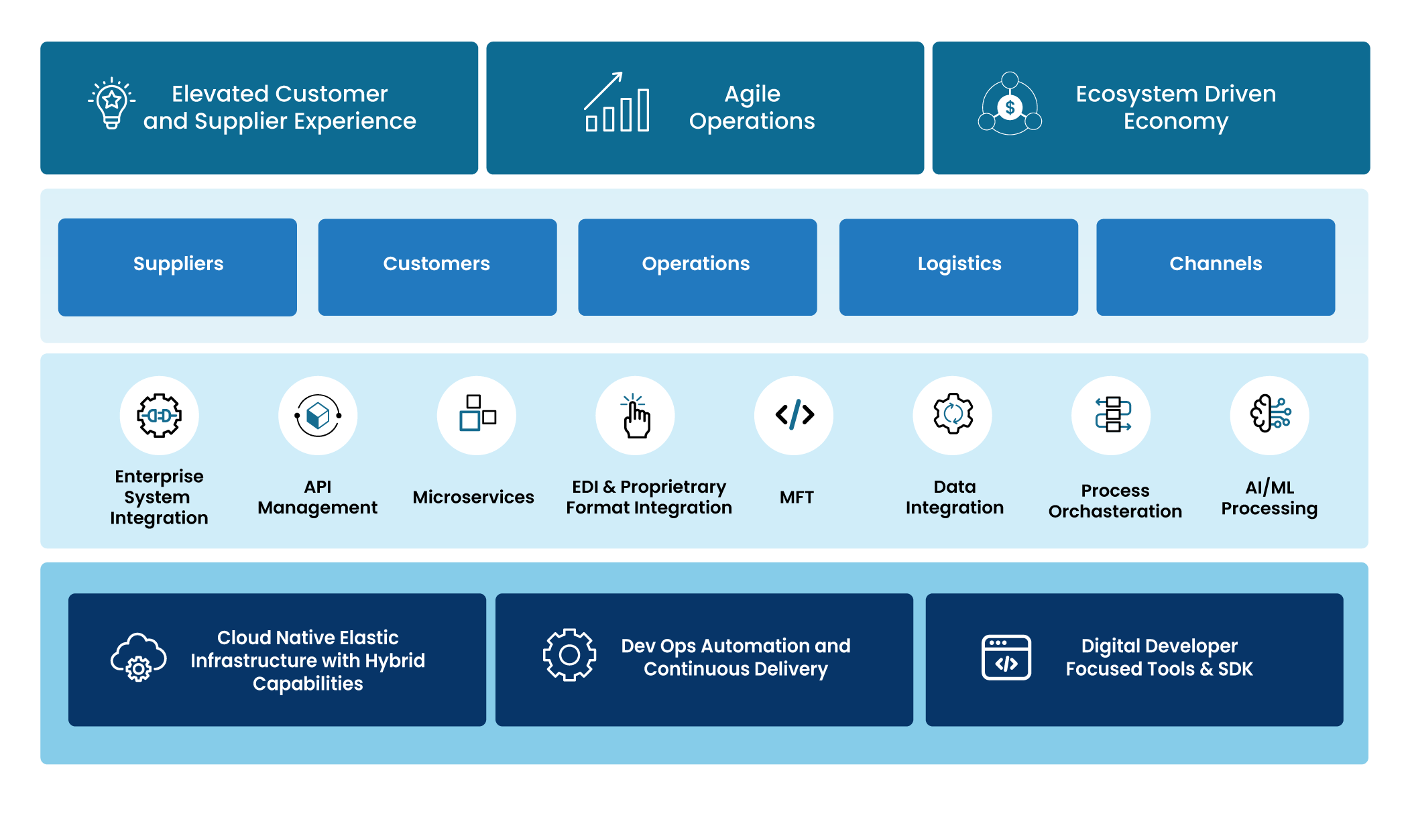Reviving workplace style: How apparel supply chain can be ready for the 'back to work' renaissance?

The fashion industry, especially the apparel supply chain, is likely to experience a renaissance now that President Trump has ordered federal workers back to the office after nearly five years of working from home [1]. The Office of Management and Budget (OMB) at the Whitehouse issued guidance in March 2020 that encouraged agencies to maximize telework for federal employees, especially for those in high-risk categories for COVID-19. This 2020 guidance was dramatically reversed on January 20th.
The work-from-home (WFH) impact of 2020 brought about abrupt change to fashion and apparel as telework was widely adopted across most federal agencies. Agencies like the Department of Defense and the IRS began moving employees to remote work almost immediately as part of a broader effort to ensure continuity of operations while prioritizing the health and safety of all Americans. In 2021, the Biden administration extended the work-from-home (WFH) initiative and encouraged agencies to further explore flexible work arrangements, including hybrid models. Agencies like the General Services Administration (GSA) and Department of Energy embraced a permanent telework option for some roles.
The WFH impact on fashion and apparel, in particular, luxury brands and footwear, was profound. With fewer employees commuting, the luxury footwear market for dress shoes saw a double-digit decline, while casual and athleisure styles experienced growth.
Impact on fashion demand
Work-from-home (WFH) policies in federal agencies were closely followed by similar actions in the private sector, a move that meant a direct shift away from traditional office attire. The impact of WFH on fashion and apparel, especially suits, blouses, dresses, trousers, luxury brands, and office-appropriate footwear, was profound. Fewer employees commuting to the office led to a double-digit decline in the luxury footwear market, while casual and athleisure styles experienced growth. McKinsey reported a 27-30% decline in fashion and footwear demand in 2020 [2]. This will mostly be reversed now.
The change to WFH policies for federal agencies impacted federal workers almost immediately. A workforce of 2.3 million followed by a civilian labor force achieving near-total remote operations for eligible employees for millions across the globe in a very short time. As a result, in 2020, fashion brands had to cancel more than USD$40 billion of finished and in-production orders of goods from factories and suppliers, who were left footing huge bills for materials and struggling to pay their workers, keep workers employed, provide furlough or severance pay and keep their businesses afloat. Manufacturers across the globe were affected during that time.
Adapting a civilian workforce to the lead set by the federal government was relatively quick with the widespread adoption of athleisure, a hybrid style of athletic clothing typically worn as everyday wear and, as the name suggests, combines the words 'athletic' and 'leisure'. Athleisure has been blurring lines between casual and performance wear for years, accelerating over the past 5 years. Some suggest that athleisure is expected to have an even longer-term impact on children, particularly Gen Alpha (b 2013–2025), who, at least in my hometown, appear to prefer flip-flops, sportswear (shorts), and pajamas.
Change in consumer behavior
The Office of Personnel Management (OPM), which tracks gender statistics, states the percentage of women in the federal workforce is approximately 44% (based on historical trends). The U.S. Bureau of Labor Statistics indicates the civilian labor force (2023) is approximately 166 million with women typically around 47%. Consumers, a diverse group by nature, allocated much of their spending between 2020 and 2025 toward home goods, tech gadgets, with allocations toward travel, and wellness more recently rather than luxury items tied to public appearance, a trend that is about to change and rapidly based on recent history.
Consumers allocated much of their spending after 2020 toward home goods, tech gadgets, and wellness rather than luxury items tied to public appearance, a trend that is about to change.
While getting workers to return to the office has been an ongoing struggle in the civilian labor force as offices reopened throughout 2022-2023, the result has been a gradual rebounding of luxury formal footwear sales. While a slower market recovery than preferred, consumer trends have indicated a preference for hybrid styles that combine elegance and comfort.
New rules that require federal employees to return to work in person at their respective duty stations full-time are likely to have an impact well beyond the government sector. Perhaps the most dramatic change to work in nearly five years when coupled with reforms in the federal hiring process, restoring merit to government service, the impact is expected to reach deeply into the private sector, well across the civilian labor force and a diverse group of consumers resulting in a change in the Fashion & Apparel sector, perhaps the largest changes in recent memory.
Is your supply chain ready for change?
When the changes begin, the expectation among the fashion elites, particularly in apparel and footwear, is that the newer styles in the smaller retail formats combined with online consumer trends will impact retail supply chains from source to destination. Comfort-focused luxury shoes promoted by high-end brands are garnering category support. Expectations are high, apparel supply chains are gearing up, and there is an increased emphasis on AI. The next question becomes, “Are you ready for change?”
Prepare your apparel supply chain for future - rapidly and efficiently!
PartnerLinQ is an integrated supply chain platform that offers supply chain management software, including digital connectivity (EDI) and supply chain visibility software, to help businesses adapt to change at the speed of business. PartnerLinQ provides a predictable way to manage the unpredictable, a supply chain visibility platform that keeps up with the rapidly evolving landscape, extending your reach, and relevancy, and helping your team to rebalance in a market undergoing rapid change. PartnerLinQ offers advanced supply chain analytics software for structured and unstructured data using uses AI and machine learning (ML) models to help businesses with EDI integration, supply chain management, and demand planning for the future.
Sources:
[1] whitehouse.gov
[2] mckinsey.com
[3] fashionrevolution.org
FAQs:
How will the return-to-office trend affect apparel supply chains?
The return-to-office policies are expected to drive a resurgence in demand for formal and office-appropriate attire, reversing the work-from-home trends of casual and athleisure wear dominance. Retail supply chains must adapt to increased demand for comfort-focused luxury styles and hybrid office wear. This requires efficient supply chain visibility and adaptability to meet the rapid shift in consumer preferences.
What challenges do retail supply chains face with shifting demand?
Retail supply chains must address challenges such as rapidly changing consumer preferences, demand fluctuations, and the need for real-time data insights. The pandemic highlighted vulnerabilities in order cancellations and supplier difficulties, making it crucial to integrate AI-powered analytics and supply chain visibility platforms to improve demand planning and avoid disruptions.
How can retailers future-proof their supply chains?
Retailers can prepare by adopting integrated supply chain platforms like PartnerLinQ, which offer tools for digital connectivity, end-to-end visibility, and advanced analytics. These technologies enable businesses to manage unpredictability, respond quickly to demand surges, and rebalance their supply chains effectively in a rapidly evolving market.
 PartnerlinQ
PartnerlinQ





